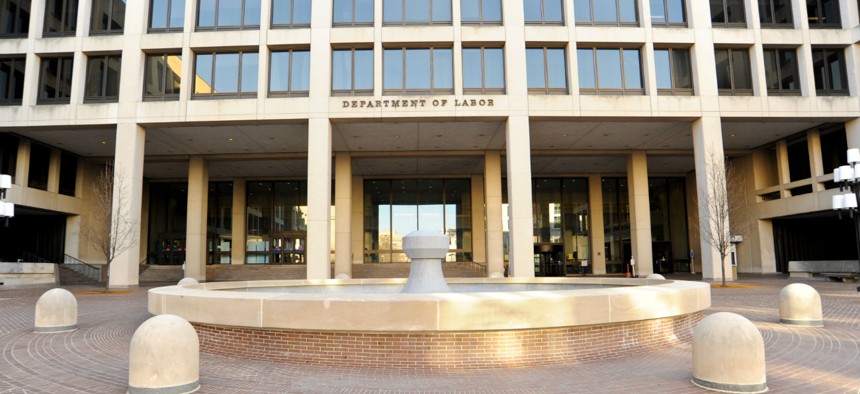
By Rena Schild / Shutterstock.com
Labor Department Set to Streamline Procurement Services
The department has already made headway on shared services for human resources and information technology.
The Labor Department is consolidating its procurement services into one office this quarter, after making headway streamlining human resources and information technology support, the department’s No. 2 official said on Friday. This is part of a push from the Trump administration for more shared services, where one office provides administrative support for multiple agencies within a department or across government.
Deputy Labor Secretary Patrick Pizzella, who also worked at the department under the George W. Bush administration, made his remarks about shared services during an event hosted by the nonprofit National Academy of Public Administration. Upon returning to the department in 2018, there were 19 human resources offices, four procurement units and four information technology offices, he said, leading to a “patchwork quilt of administrative professionals scattered across the agency.” The department fully implemented human resources shared services in fiscal 2019 and is almost done with consolidating information technology.
Pizzella said shifting to a shared services model was an “intentionally slow and deliberate” move, which is part of the department’s fiscal 2018-2022 strategic plan. “[Labor Department] agencies would be giving up their own administrative offices and we needed to centralize that in a way that freed up resources for them to focus on mission and ensure that they receive the same, if not better services under the new model,” he said. “We spent nearly 18 months in discovering and planning stages…[which] allowed us to identify both challenges and best practices.”
A push toward more cross-agency shared services is part of the president’s management agenda. Additionally, agencies, like the Labor Department, have started their own internal shared services. “There are successes out there in the shared services model both on a cross-agency basis as well as [within] individual [agencies],” said Alan Chvotkin, executive vice president and counsel for the contractor group the Professional Services Council. He estimated that at least a dozen agencies are doing shared services to help with some of their functions.
Since Labor only started its initiatives last fiscal year “it’s too early to tell” how it’s been going, Chvotkin said. He noted that success in shared services can also bring challenges in changing long-standing operational procedures.
Pizzella said the Labor Department created governance boards with members of each of the client agencies within the department in order to collaborate to oversee progress.
The move toward shared services fits into Labor’s overall management goals, Pizzella said. “Our strategic plan, our operating plan, our budget, if they are in silos you’re going to have confusion,” he said. “I really believe it’s important that we connect the dots in all these things…[which] provides the single most important thing I believe is necessary in the leading of a large organization, particularly a government agency, and that is clarity. You cannot blame your employees if you’re not giving them clear guidance.”







